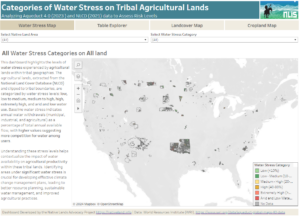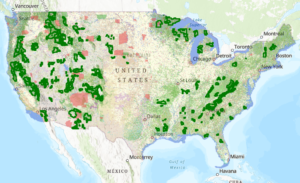Earth
Discover essential data related to the theme of Earth. This section focuses on topics such as soil quality and health, land cover, elevation and topography, and forest densities, providing valuable insights for effective forest management and land planning.
The “Earth” section within the Environmental category provides comprehensive data, maps, and dashboards related to various terrestrial conditions and trends. This section is designed to support tribal climate adaptation and mitigation planning by offering accessible and relevant information on soil quality and health, land cover, elevation and topography, and forest densities. By providing this foundational terrestrial information, the “Earth” section aims to help develop informed, effective, and culturally relevant climate strategies for tribal communities. Explore the available resources to gain insights and drive meaningful climate action.
Related Dashboards
Related Maps
Related Blog Posts

New to the NLIS? Start here!
The Native Lands Advocacy Project (NLAP) compiles, consolidates, and visualizes data resources to support sovereign, sustainable, Native-led land planning and protection.

Keystone Data Tools for Native Land Planning: View the webinar recordings & share your feedback
This month, the Native Lands Advocacy Project (NLAP) wrapped up our webinar series: Keystone Data Tools for Native Land Planning. These webinars introduced attendees to

Introducing the Climate Data Portal for U.S. Native Lands
The Native Lands Advocacy Project (NLAP) is thrilled to announce the launch of our Climate Data Portal for U.S. Native Lands! Developed with funding from

Check Out These Data Tools for Native Farmers & Ranchers
Native farmers and ranchers are major contributors to their reservation economies, food systems, and land stewardship. Recognizing this, NLAP has created dedicated pages of Data Tools for Native Farmers and Data Tools for Native Ranchers. Read more about these pages here.

Soil Organic Carbon Planning, Key to Building Tribal Climate Resiliency
As tribes continue to experience the impacts of climate change on their lands and communities, they are starting to invest more of their resources and planning strategies into protecting and enhancing their soil organic carbon (SOC).

Assessing Food Resilience on Native Reservations: the Good Food Access Indicator
NLAP’s Good Food Access Indicator (GFAI) helps Native communities challenge those who look at Native food systems through a deficit lens by creating a new way to measure food access on the reservation.














